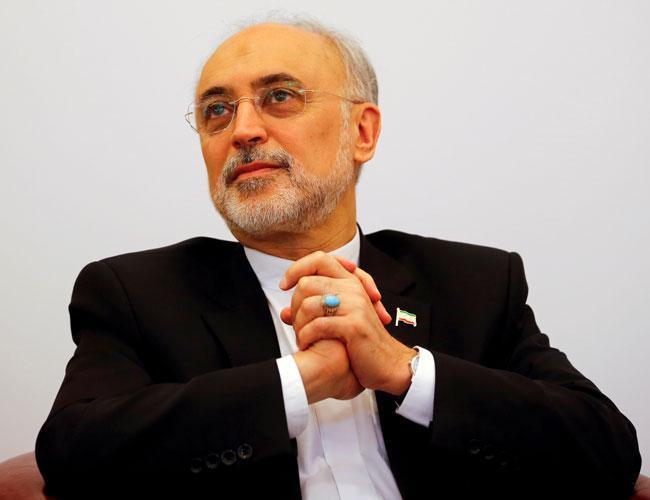
Iran’s nuclear chief inaugurated on June 6 the Islamic Republic’s new nuclear enrichment facility that is geared toward producing centrifuges which will operate within the limits of the nuclear deal Tehran signed with world powers.
The move came one day before experts from the countries still in the Iran nuclear deal held a scheduled meeting in Tehran on June 7, with the accord hanging in the balance after the United States withdrew.
Iranian state television broadcast an interview with Ali Akbar Salehi after nightfall, showcasing the facility at Natanz’s uranium enrichment center.
In the interview, Salehi said the facility’s construction began even before the 2015 deal was signed and that he hopes the first centrifuges - known as old-generation centrifuges - will roll out in a month’s time.
In a gesture likely directed at the Trump administration’s withdrawal from the deal, Iran informed the U.N. nuclear watchdog on June 5 that it will increase its nuclear enrichment capacity, yet stay within the provisions of the accord.
The landmark agreement, which lifted crippling economic sanctions in exchange for Tehran limiting its uranium enrichment program, has been facing its greatest diplomatic challenges in the wake of President Donald Trump’s decision to pull America out of it.
European nations and others involved in the accord are now trying to salvage it, and many companies that rushed to make billion-dollar deals with Iran now are backing out for fear of being targeted by U.S. sanctions.
Natanz, some 250 kilometers south of the capital, Tehran, includes underground facilities protected by some 7.6 meters of concrete, which offer protection from airstrikes.
The facility long has been a point of contention between Iran and the West since its public disclosure by an Iranian exile group in 2002. While Tehran long has maintained its nuclear program is for peaceful purposes, Western nations have feared Natanz represented a means for Iran to enrich enough uranium to produce atomic weapons.
The Stuxnet computer virus, widely believed to be an American and Israeli creation, caused thousands of centrifuges at Natanz to spin themselves to destruction at the height of the West’s fears over Iran’s program.
Under the 2015 nuclear deal, Iran agreed to store its excess centrifuges at Natanz under constant surveillance by the U.N. nuclear watchdog, the International Atomic Energy Agency. Iran can use 5,060 older-model centrifuges at Natanz, but only to enrich uranium up to 3.67 percent. Natanz was designed to have as many as 50,000 centrifuges operating there.
Meanwhile, a closed-door meeting involving representatives from Iran, Britain, China France, Germany and Russia as well as the European Union was held on June 7
“It is one of the technical meetings that are held regularly,” a diplomatic source told AFP, adding that it would focus on economic issues.
French Foreign Minister Jean-Yves Le Drian warned Iran on June 6 that its plan to increase its uranium enrichment capacity took it close to a “red line.”
Iran insists its nuclear program is for civilian uses only, but opponents in the U.S., Israel and Saudi Arabia accuse it of seeking to build an atomic bomb.